What are upright rows?
Cable upright rows are a resistance exercise that primarily targets the lateral delt muscles on the outside of your shoulder. It is performed on a cable pulley machine with a straight bar attachment but variations of the movement include the use of a standard barbell, an EZ bar, dumbbells, or kettlebells.
In this article, we will explore the different variations of cable upright rows, the muscles targets, how to get the most from upright rows, and alternative exercises available.
Which muscles are targeted with upright rows?
The main target muscles for cable upright rows are the lateral deltoids. This is the middle head of your deltoid muscles and gives your shoulder a wider, rounder look when developed.
The traps, biceps and rear delts are also activated to a lesser extent, as are the forearms and trunk muscles as stabilisers.
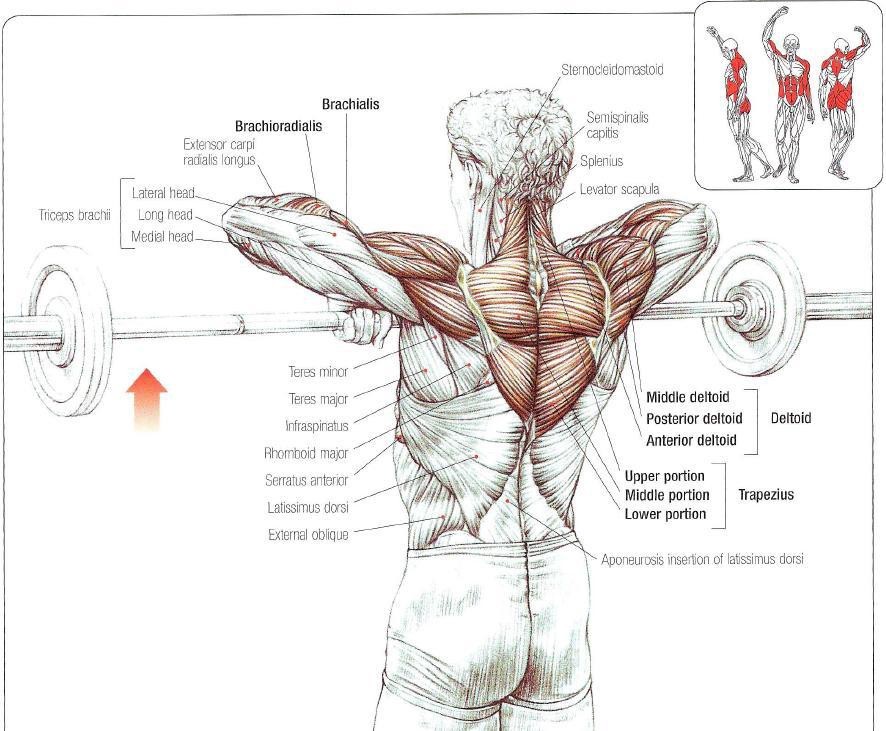
The combination of muscles targeted by upright rows makes it a great exercise for upper body development. To give your traps and lateral delts a great pump, try super-setting upright rows with shrugs.
Pros of cable upright rows.
If you are a bodybuilder, the development of the lateral delts is essential as it adds width to your shoulders and makes the upper arm muscles pop.
Lateral deltoids can be harder to develop as they are not directly targeted with pressing or rowing exercises like the anterior and posterior deltoids. The only other exercise that primarily focuses on the lateral delts is lateral raises.
For strength trainers, it is beneficial to add accessory lifts such as cable upright rows to your routine. It will give you overall stronger shoulders to help you stabilize pressing movements and add power to your deadlifts.
Adding direct resistance training to your lateral delts will also add mobility and help prevent injury to an area that is very susceptible.
Cons of cable upright rows.
There are a few downsides to consider with cable upright rows. If you have had a previous shoulder injury, this exercise will be tricky. It is notorious for causing rotator cuff tears as it forces the shoulder to make an unfamiliar movement.
As long as you warm up well and don't try a lift beyond your capabilities, you should not have a problem. If you want to lift heavy, start with a light weight and pyramid up.
Wrist mobility can also be an issue with cable upright rows. If you find a straight bar puts a painful strain on your forearms, switch to an EZ bar or dumbbells.
How do I do cable upright rows?
- Select your weight from the cable stack and set the pin at knee height
- Attach a straight bar or EZ bar to the cable end
- Grip the bar at waist height with an overhand grip
- Stand with a straight back
- Take a deep breath, upon exhaling, row the bar upwards so that your hands are above shoulder height
- Squeeze the traps and hold the movement for two seconds before slowly lowering the bar back down
- Repeat for the required number of reps and sets
- Don't go too heavy. Focus on good form, muscle connection and time under tension
The cable machine is great for upright rows. You can use an EZ attachment, straight bar or double rope depending on your grip preference. The movement is exactly the same as a barbell upright row.
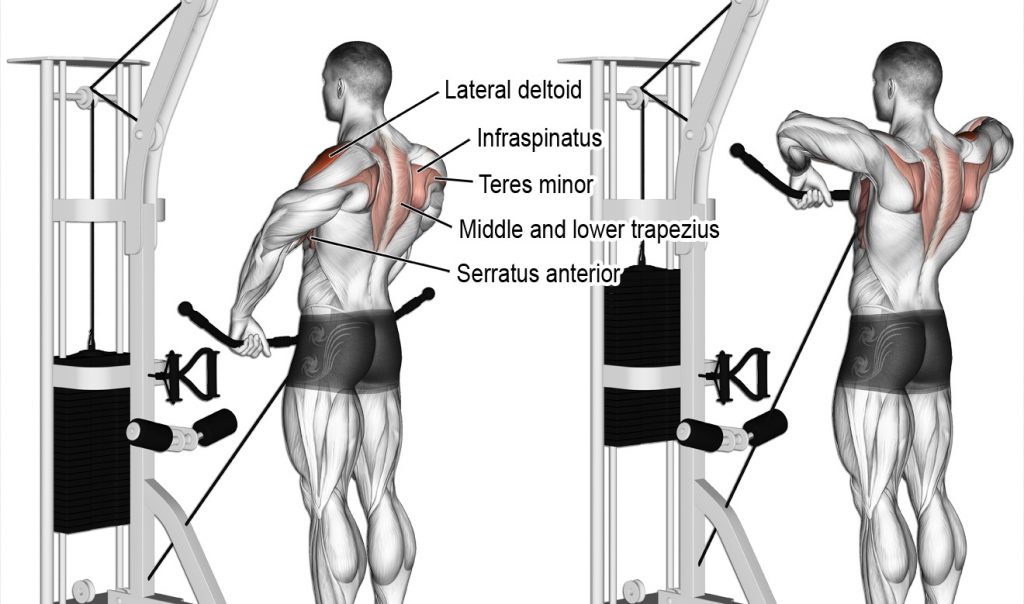
When performing an upright row with a cable, make sure that the pin is placed at a low point and that you are standing very close to the machine.
If you stand back from the machine, your traps and rear delts will take most of the strain as opposed to your lateral delts. Standing back will also put extra strain on your lower back to keep you upright.
Variations of upright rows.
How do I do barbell upright rows?
This is the standard method for performing upright rows. It is best performed with a short bar or EZ bar for stability and better balance.
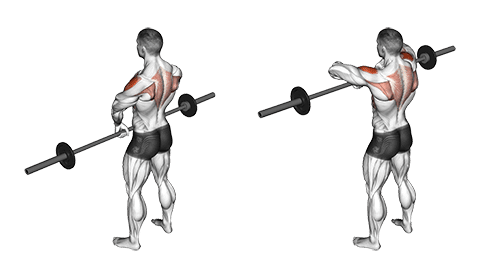
- Select your weight, pick it up with an overhand grip, with your hands at about shoulder-width. You can vary your grip to a narrow or wide grip to target the muscle from different angles if preferred.
- Stand with the weight hanging by your hips. This is your starting position.
- Take a deep breath in, and upon exhaling, raise the bar with your outer shoulders.
- As you lift the bar, raise your elbows and keep the weight close to your body.
- When the weight is just below your chin, begin to lower it in a controlled manner to the starting position.
- Repeat for the required number of reps and sets.
- Keep a straight back throughout the movement and do not cheat the movement by swinging backwards and forwards.
Some people find a wide grip more advantageous. Others prefer to lift the weight to forehead level. Have a play around with these alternatives and find the one that works best for you. Make sure that the grip is comfortable and that you are getting the best connection with the target muscle.
How do I do dumbbell upright rows?
Dumbbell upright rows are essentially performed in the same way as barbell upright rows. There are a few advantages of using dumbbells instead.
You can rotate the wrist as you raise the weight, taking pressure off the forearm and allowing a slightly wider range of motion. You are also making each arm work independently so your weaker arm is forced to work unassisted.
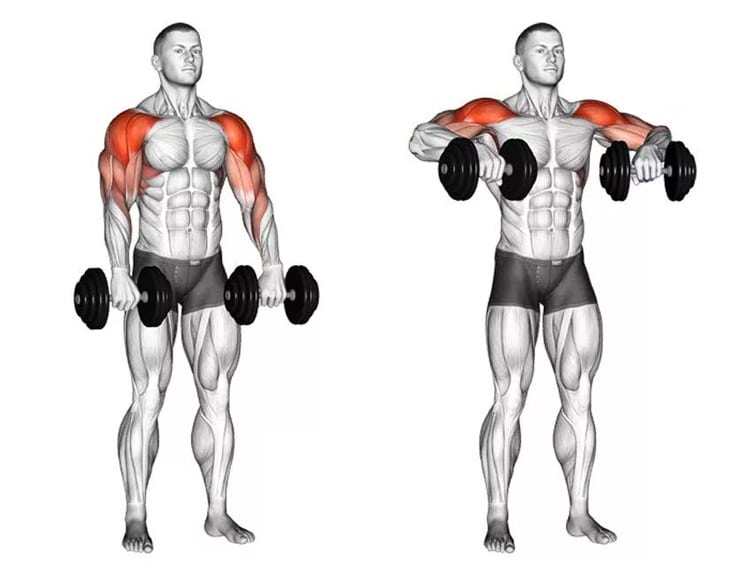
Dumbbell lateral raises are great to superset with dumbbell shoulder presses. Three supersets of these two exercises with minimal rest time will give your shoulders a great pump.
How do I do kettlebell upright rows?
Kettlebells can be used as an alternative for upright rows. Kettlebells are a little more restrictive in terms of grip width, but can otherwise be used in exactly the same way with effective results. The movement and muscles targeted are the same as a barbell upright row.

One advantage of using kettlebells is that you can combine the movement with front squats or kettlebell swings. This makes upright kettlebell rows great for circuits and compound training.
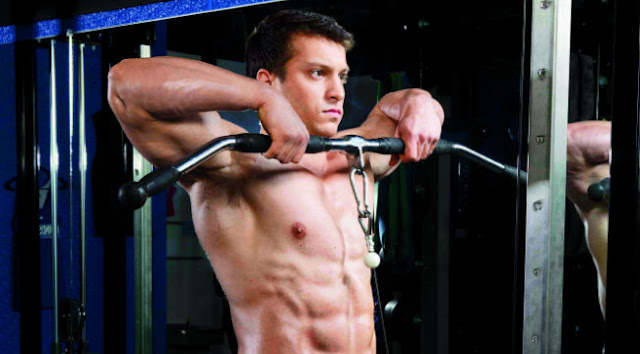


.png)




